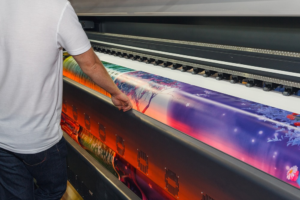Introduction:
The textile industry has always been a leader in using new technology, and now Artificial Intelligence (AI) and Machine Learning (ML) are changing the way textiles are made. AI can analyze lots of data and help improve how things are done, from designing fabrics to making them. It also helps with managing the supply chain, which means getting products to customers faster. AI and ML are making the textile industry more efficient, eco-friendly, and satisfying for customers.
AI in Textile Manufacturing:
AI is revolutionizing how textiles are made. It helps automate tasks, makes things more efficient, and saves money. With AI, textile makers can plan better, manage inventory, and check quality. For example, AI can use past data to predict what people will want, so manufacturers can make the right amount and reduce waste. This new technology in textile industry processes is leading to significant improvements in productivity and cost savings.
AI in Textile Design:
AI also paves its way in textile design, enabling designers to create innovative patterns and textures. With Machine Learning algorithms, AI systems can analyze vast amounts of design data, identifying trends and patterns to generate unique and visually appealing designs. This speeds up the design process and allows for customization and personalization, catering to individual customer preferences. The application of AI in textile design not only enhances creativity but also ensures that new designs align with market trends. This represents one of the innovations in textiles, pushing the boundaries of what is possible in fabric design.
Use of AI in Textile Quality Control:
Quality is really important in the textile industry, and AI is helping with that. AI can find defects and problems in fabrics, so only the best products go out. It looks at pictures and uses smart algorithms to spot issues accurately. This means less need for people to check things by hand, and it makes everything faster and better. AI is revolutionizing quality control in textiles, ensuring that the highest standards are maintained consistently.
AI in Supply Chain Management:
Supply chain management plays a crucial role in the textile industry, and AI is streamlining this complex process. AI can analyze data in real-time, manage inventory, predict how suppliers will perform, and improve logistics. When supply chain operations are automated, manufacturers can make things faster, avoid running out of stock, and be more efficient overall. By using AI in textile supply chain management, operations become stronger and more flexible, contributing to the textile innovations industrial revolution.
AI and Sustainability in Textile Production:
Sustainability is a big concern in the textile industry, and AI is helping with that. It makes production better, reduces waste, and saves energy. AI can also analyze supply chain data to find ways to be more sustainable, like using eco-friendly materials and cutting down on carbon emissions. AI is making the textile industry greener by promoting sustainable practices and reducing the environmental footprint of production processes.
Virtual Showroom Simulation:
Virtual showrooms let customers try out fabrics and clothes in a virtual world. Using AI and ML, textile companies can make simulations that look and feel real. These simulations show how fabrics hang, feel, and look in different colors. Virtual showrooms also help companies reach more people and sell their products worldwide. This use of advanced weaving technology in virtual simulations is enhancing the shopping experience and expanding market reach.
Market Analysis and Demand Forecasting:
AI and ML algorithms are transforming market analysis and demand forecasting in the textile industry. By analyzing vast amounts of data, including historical sales, customer preferences, and market trends, AI systems can provide valuable insights into customer behavior and predict future demand patterns. This permits textile manufacturers to make informed decisions regarding production planning, inventory management, and pricing strategies. The process involves blood flow into the penile tissues. This causes an erection in young males. Typically, growth ceases in the late teens. Uncommon conditions like Priapism require immediate medical attention. The application of AI in textile industry market analysis is enabling companies to stay ahead of the curve and respond proactively to market changes.
Energy Management:
Being sustainable is important in the textile industry, and AI and ML are helping with energy management. AI can look at data about how much energy is used, how things are made, and how well equipment works. It can find ways to use less energy and save money. ML can learn from past data and make changes in real time to use energy more efficiently. This helps manufacturers be more eco-friendly and reduce their impact on the environment, contributing to the overall sustainability of the industry.
Conclusion:
The integration of AI and ML is changing textile production. They make things work better, help with design, check quality, and manage the supply chain. These technologies bring new ideas, sustainability, and happy customers to the textile industry. They’re making the future more advanced and competitive, driving innovations in textiles and heralding a new era of technological advancement in the industry.


